Iran’s nuclear program has been at the center of international tensions for decades, with recent developments at the Fordow Fuel Enrichment Plant drawing particular concern from global powers12. The facility, built deep within a mountain near the city of Qom, has become a focal point due to its fortified nature and the deployment of advanced IR-6 centrifuges that have dramatically increased Iran’s uranium enrichment capabilities34.
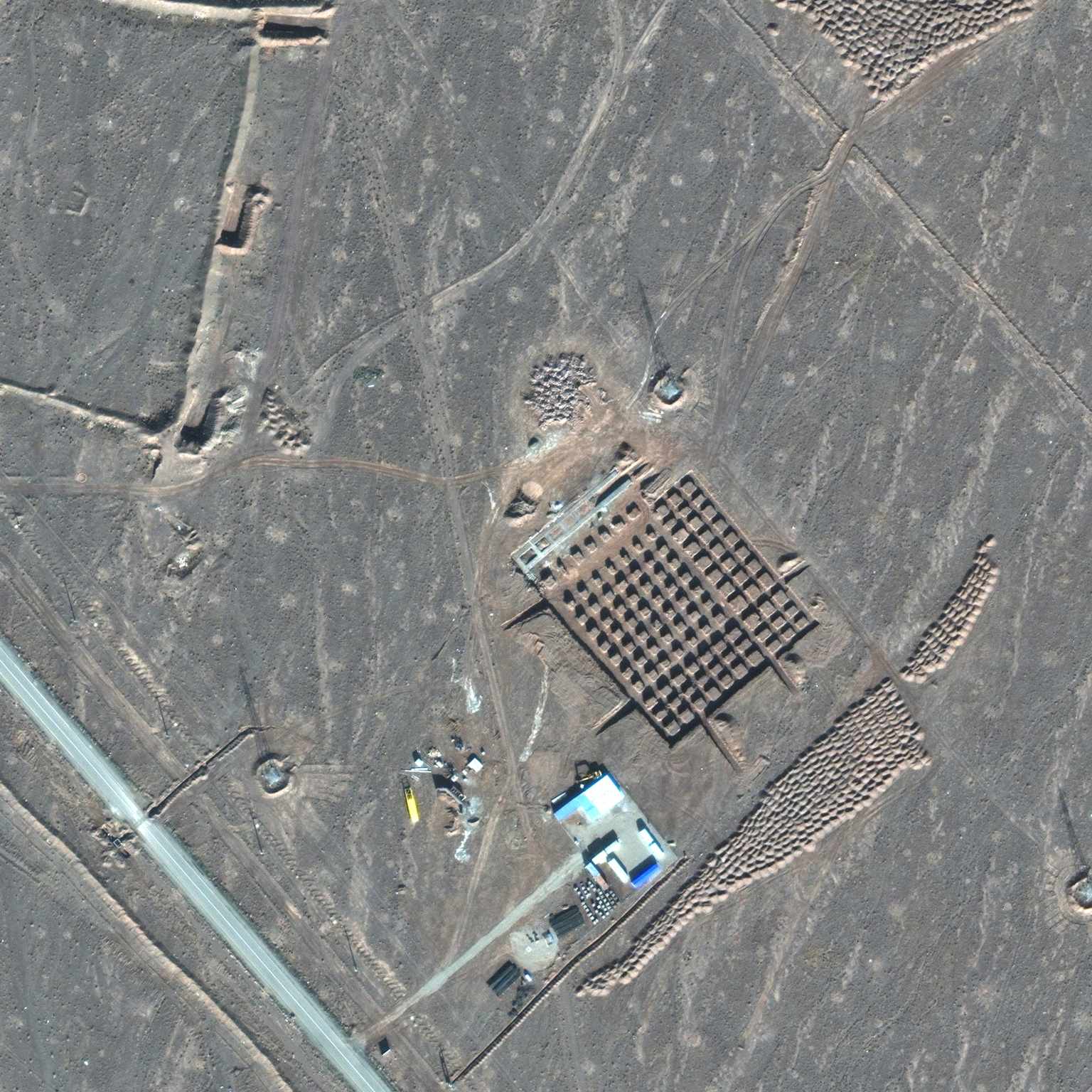
Overhead satellite view of Iran’s Fordow nuclear facility, showcasing its remote location and key structural features.
What is the Fordow Facility?
The Fordow Fuel Enrichment Plant (FFEP) is an underground uranium enrichment facility located approximately 30 kilometers north of the Iranian city of Qom4. Construction on this facility began in 2006, though its existence was only disclosed to the International Atomic Energy Agency (IAEA) in September 2009, after Western intelligence services had already discovered it43.
Built inside a mountain and buried 80-110 meters underground, Fordow was designed to withstand potential airstrikes56. This fortification has made it a particularly significant and concerning component of Iran’s nuclear infrastructure75.
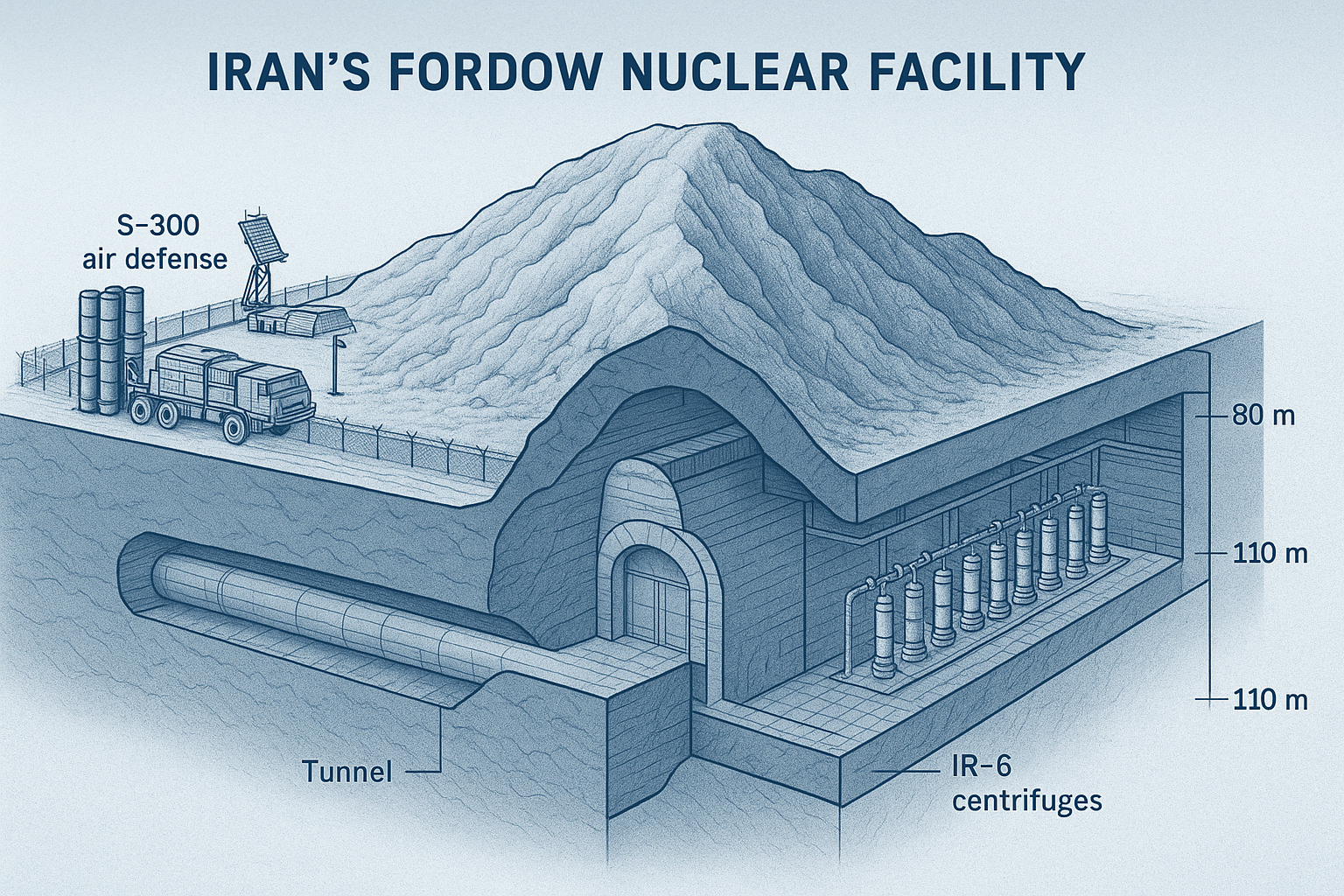
Cross-section illustration of Iran’s Fordow nuclear facility, showing its underground centrifuge halls built deep inside a mountain, approximately 80-110 meters below the surface.
The facility was initially declared to accommodate approximately 3,000 centrifuges42. Under the 2015 Joint Comprehensive Plan of Action (JCPOA), Iran agreed to halt enrichment activities at Fordow, but following the US withdrawal from the agreement in 2018, Iran resumed enrichment operations at the site43.
Today, Fordow houses both older IR-1 centrifuges and the more advanced IR-6 machines, making it a critical site in Iran’s nuclear program28. The facility’s heavily protected nature and the deployment of more sophisticated centrifuges have raised international concerns about Iran’s nuclear intentions59.
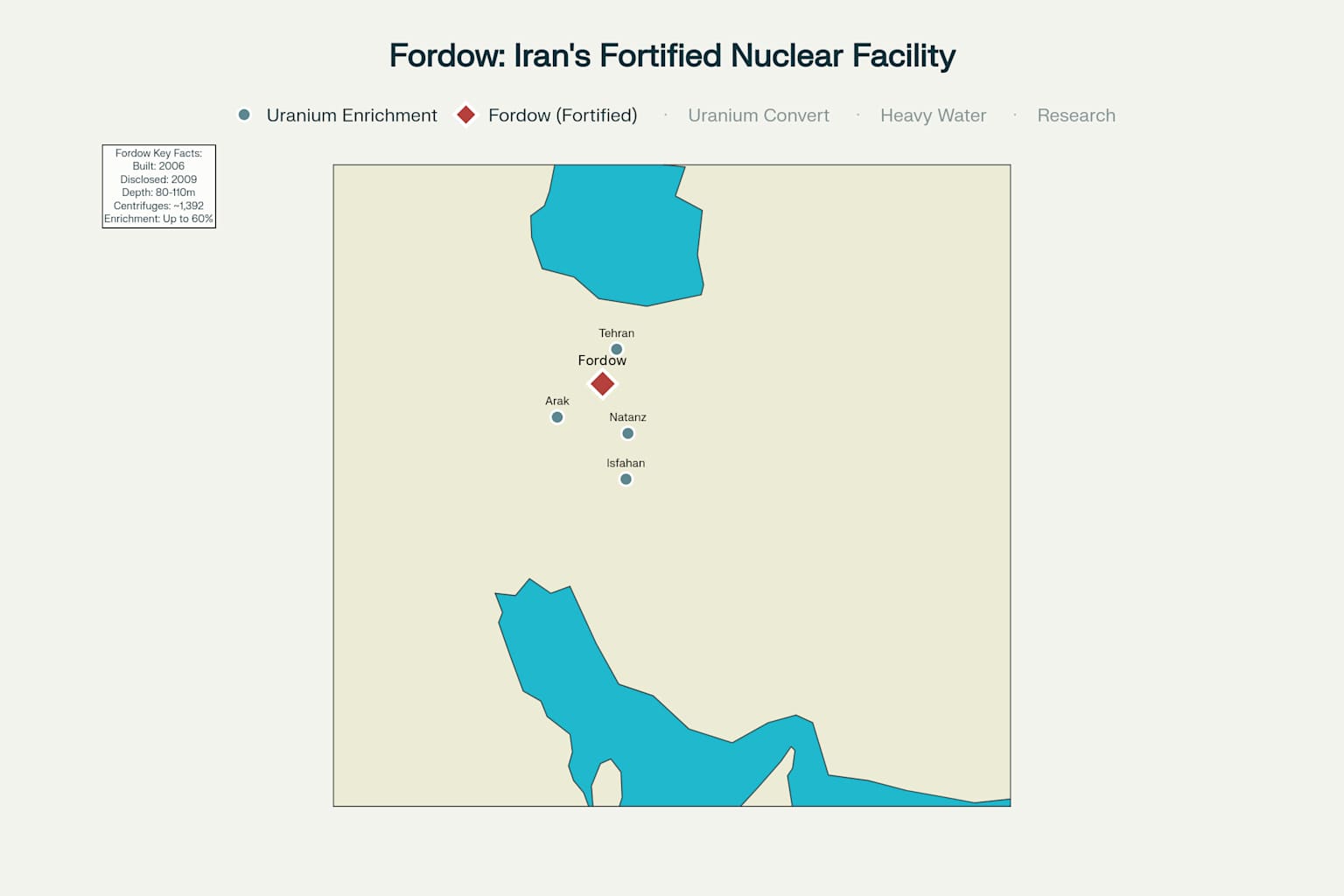
Iran’s Fordow Nuclear Facility
Historical Context: Iran’s Nuclear Journey
Iran’s nuclear program began in the 1950s under the Shah with US support, initially focused on peaceful energy production1011. Following the 1979 Islamic Revolution, the program continued but faced increasing international scrutiny1211.
The discovery of undeclared nuclear facilities at Natanz and later at Fordow significantly escalated concerns about the potential military dimensions of Iran’s nuclear activities1013. The Fordow site was particularly alarming to Western powers because its size, configuration, and secrecy suggested potential military purposes rather than civilian energy needs144.
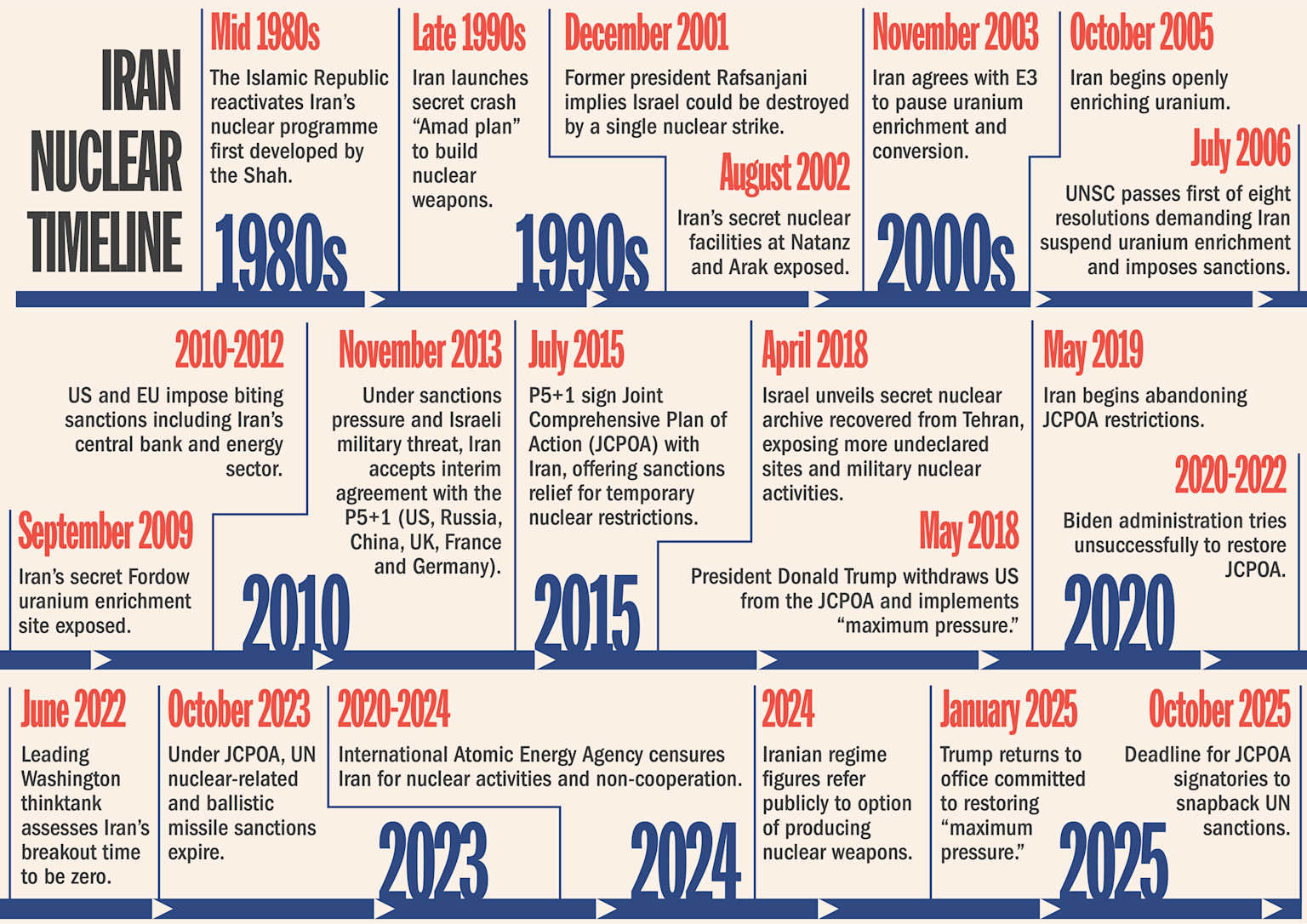
Timeline of Iran’s nuclear program from the mid-1980s to 2025, detailing key events and international agreements.
In 2015, Iran signed the JCPOA with world powers, agreeing to restrict its nuclear activities in exchange for sanctions relief1110. This agreement significantly limited Iran’s enrichment capabilities and placed the Fordow facility under strict monitoring415.
However, the US withdrawal from the deal in 2018 led Iran to gradually resume and expand its enrichment activities, including at Fordow104. By 2021, Iran had begun installing and operating advanced IR-6 centrifuges, marking a significant technological leap in its enrichment capabilities1617.
Recent years have seen further developments, with Iran announcing plans to expand centrifuge deployment at Fordow in response to international pressure18. In June 2025, amid rising tensions, Israel launched strikes against various Iranian nuclear facilities, though Fordow’s underground position has made it particularly resistant to such attacks96.

Timeline of Iran’s nuclear program from the mid-1980s to 2025, highlighting key events including the exposure of the Fordow enrichment site.
Understanding Centrifuges: The Basics
Gas centrifuges are devices used to separate isotopes of uranium for enrichment purposes1913. When uranium is mined, it consists of approximately 99.3% uranium-238 and only 0.7% uranium-235, the isotope needed for nuclear energy and weapons197.
In the enrichment process, uranium ore is converted into uranium hexafluoride (UF6) gas, which is then fed into centrifuges2019. As the centrifuges spin at extremely high speeds, the heavier U-238 molecules move toward the outside walls, while the lighter U-235 concentrates toward the center2119.
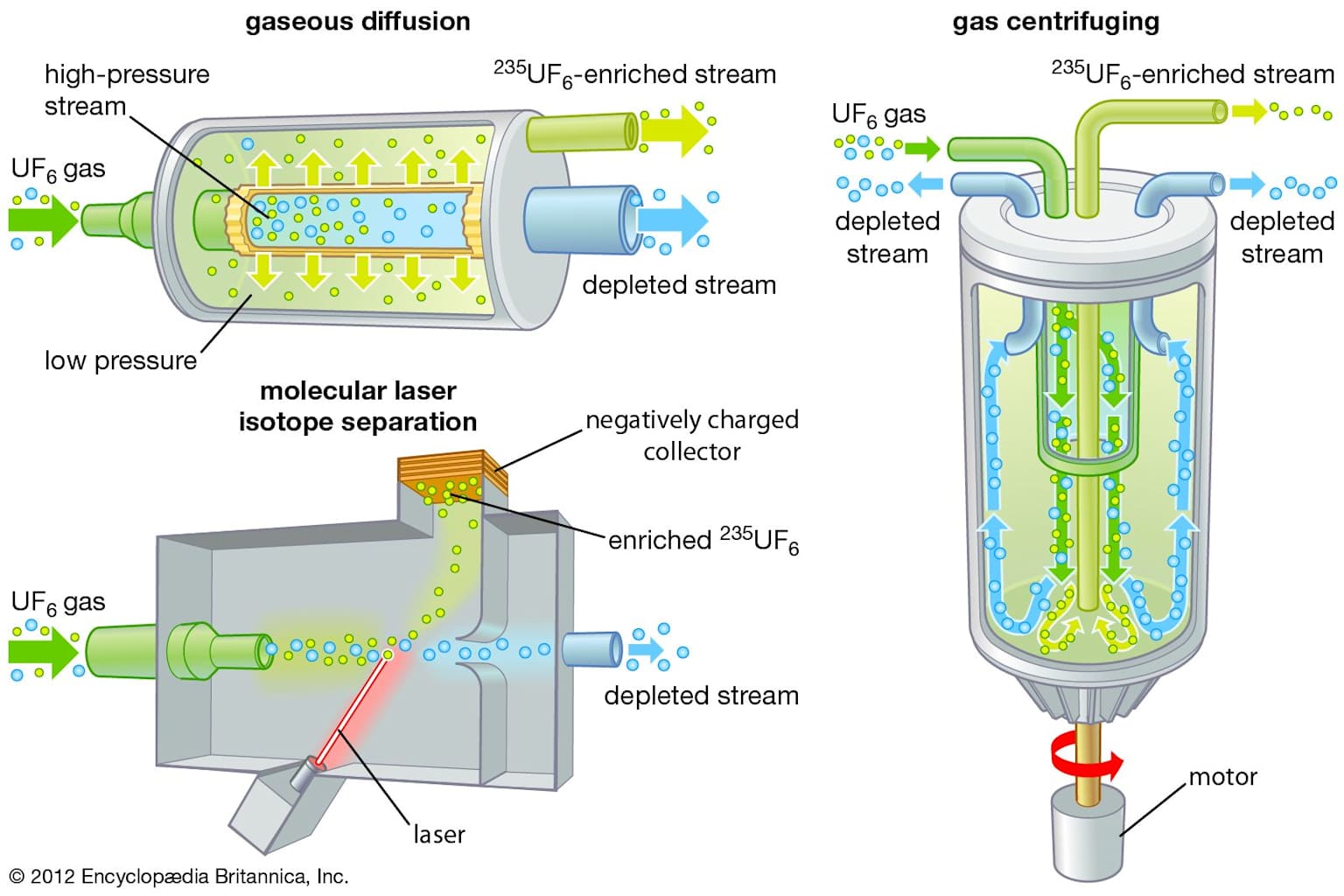
Diagram showing uranium enrichment methods: gaseous diffusion, gas centrifuging, and molecular laser isotope separation, illustrating how UF6 gas is processed to separate enriched uranium isotopes.
The enriched uranium is extracted from the center, while the depleted uranium (with less U-235) is removed from the outer edges2119. Multiple centrifuges are connected in series and parallel formations, known as cascades, to progressively increase the concentration of U-235 to desired levels197.
For civilian nuclear power plants, uranium is typically enriched to 3-5% U-23519. Research reactors may use uranium enriched to around 20%16. Uranium enriched beyond 20% enters the category of highly enriched uranium (HEU), with weapons-grade uranium requiring enrichment to approximately 90%22.
The efficiency of this process is measured in Separative Work Units (SWU) per year, which indicates how much separative work a centrifuge can perform annually2324. This measurement is crucial for understanding the enrichment capacity and potential applications of different centrifuge models2524.
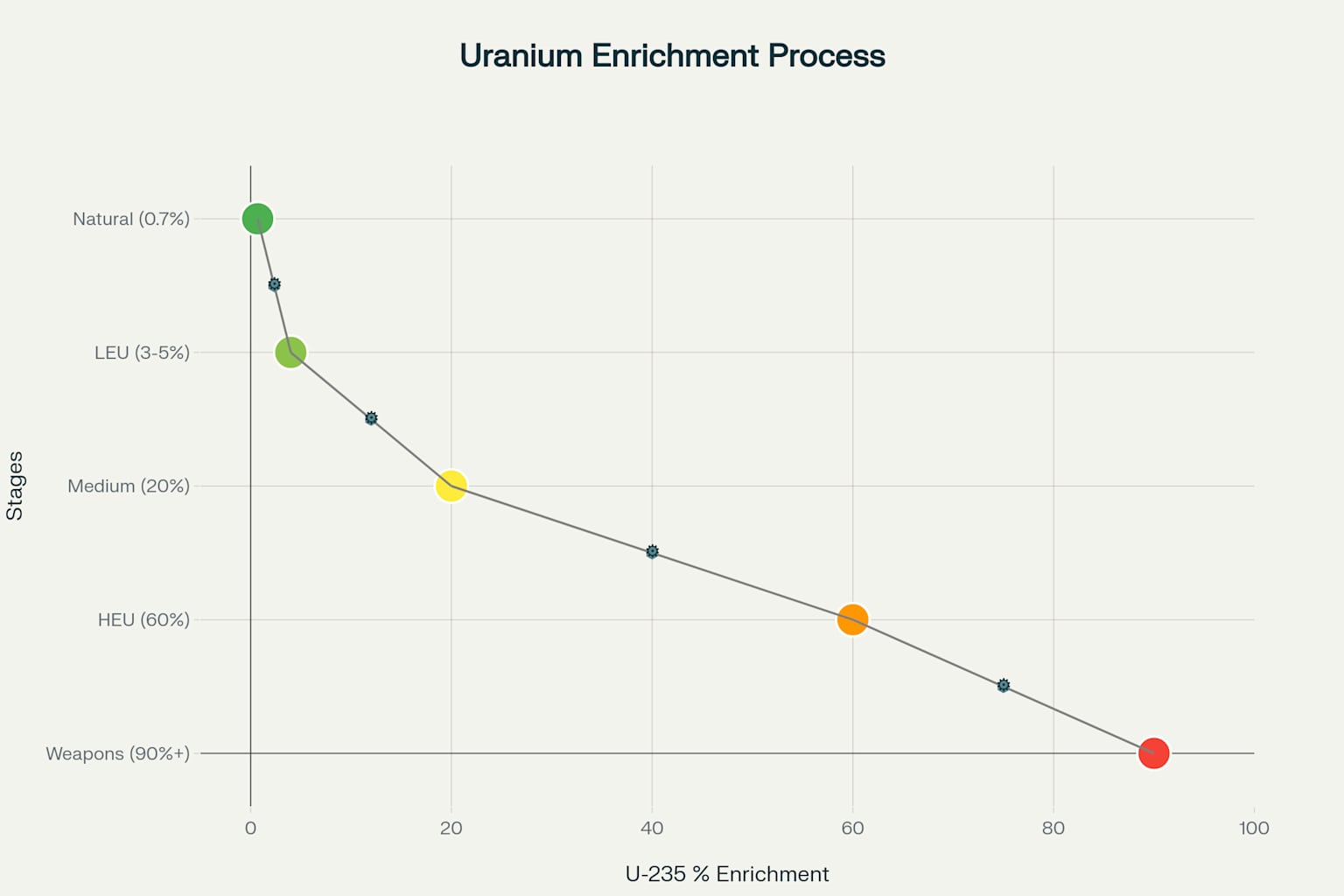
Uranium Enrichment Process Flowchart
The IR-6 Centrifuge: Iran’s Advanced Technology
The IR-6 centrifuge represents a significant technological leap in Iran’s enrichment program124. First developed in 2009 and publicly presented in 2010, the IR-6 is part of Iran’s third generation of centrifuge designs26.
Unlike the older IR-1 model, which uses aluminum rotors and maraging steel bellows, the IR-6 incorporates carbon fiber rotors and bellows, making it more durable and efficient24. The standard model of the IR-6 is approximately 160-168 cm tall with a casing width of 30 cm, compared to the IR-1’s 210 cm height and 20 cm width2627.
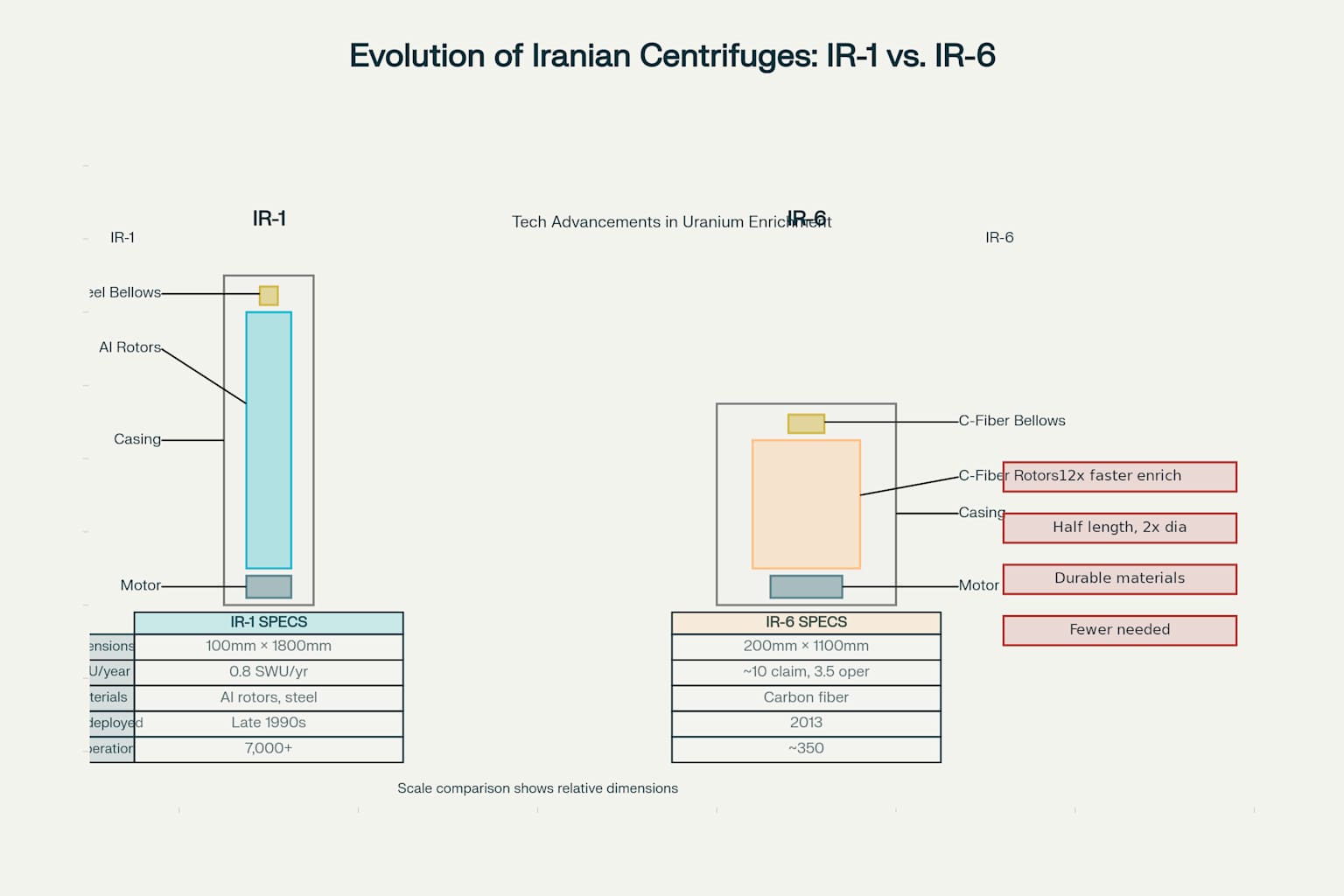
IR-1 vs. IR-6 Centrifuge Comparison
The IR-6 has a reported theoretical enrichment capacity of approximately 10 SWU per year, compared to the IR-1’s 0.8 SWU per year—a more than tenfold increase2428. However, operational data suggests the actual performance is lower, around 3.2-3.6 SWU per year, though this still represents a significant improvement over the IR-1226.
Each IR-6 centrifuge consists of two carbon fiber rotor tubes connected by a bellows1. The materials used in these advanced centrifuges allow them to spin at much higher speeds, significantly increasing their enrichment efficiency2126.
Iran has been working on variants of the IR-6 design, including the IR-6s, a shorter, single-rotor version with lower capacity but potentially easier manufacturing and operation2629. Recent evidence also suggests Iran may be experimenting with metal bellows for the IR-6, possibly indicating ongoing development challenges or design modifications1.

A close-up view of a component likely part of an IR-6 centrifuge.
Technical Comparison: IR-1 vs. IR-6
The technological advancement from the IR-1 to the IR-6 centrifuge represents a major leap in Iran’s enrichment capabilities2428. The IR-1, based on a 1970s-era design obtained through the A.Q. Khan network, has been Iran’s workhorse centrifuge for decades2624.
The IR-1 centrifuge has several technical limitations2624. It uses aluminum rotors connected by maraging steel bellows, materials that restrict the maximum rotational speed and thus limit enrichment efficiency2628. With a rotor assembly approximately 180 cm long and 10.5 cm in diameter, the IR-1 achieves an estimated separation performance of only 0.8 SWU per year in a cascade configuration2624.
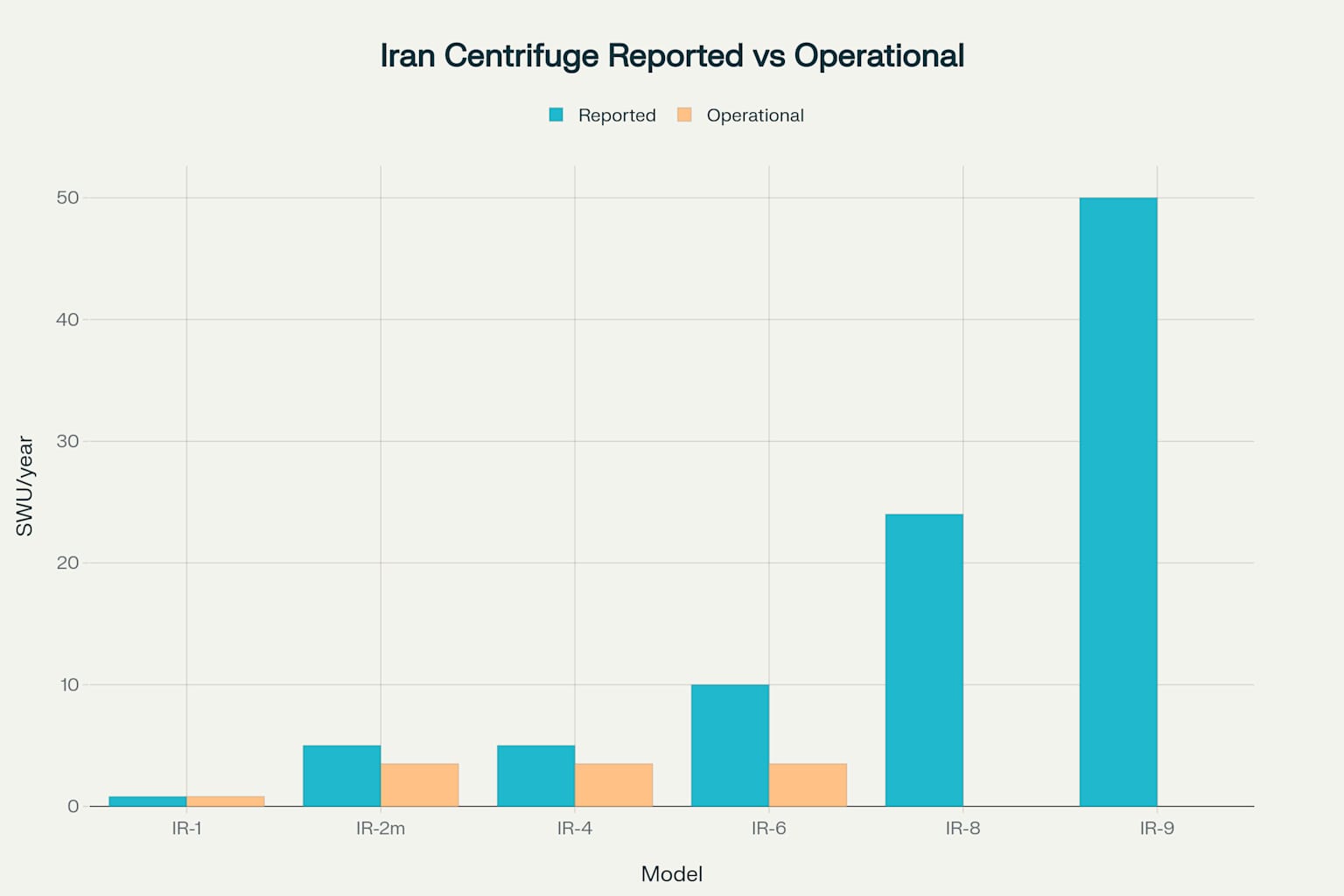
Comparison of Iranian Centrifuge Models
In contrast, the IR-6 offers substantial improvements in both design and performance126. Its rotor assembly consists of two carbon fiber tubes connected by a bellows, with a width of 200 mm and length of 1100 mm1. The use of carbon fiber allows the centrifuge to spin at much higher speeds without risk of material failure2627.
While Iran claims the IR-6 can achieve 10 SWU per year, operational data suggests a lower but still significant output of 3.2-3.6 SWU per year—roughly four times the capacity of the IR-1226. This means that a single IR-6 centrifuge can do the work of approximately four IR-1 machines21.
The practical implication is substantial: fewer centrifuges are needed for the same enrichment output, allowing for smaller, more efficient, and potentially easier-to-conceal enrichment facilities2927. A cascade of IR-6 centrifuges requires significantly less space than an equivalent IR-1 cascade, while achieving the same or greater enrichment capacity2629.
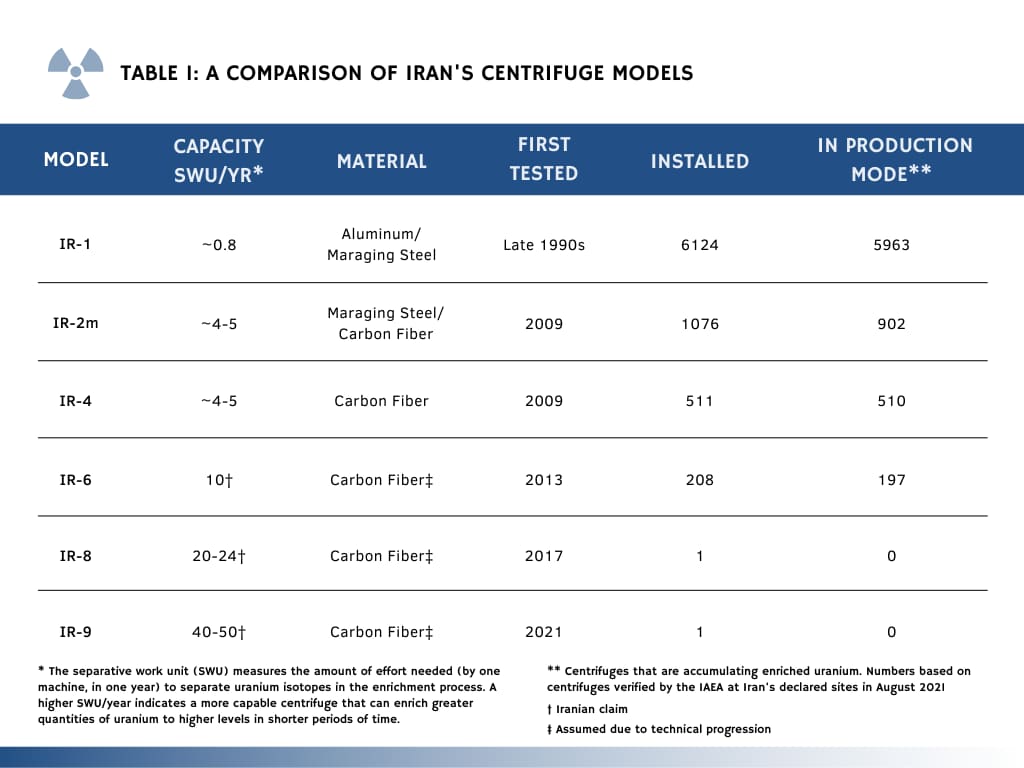
A table comparing key specifications and deployment status of Iran’s centrifuge models, including the IR-6.
Fordow’s Strategic Importance
The Fordow facility holds unique strategic importance in Iran’s nuclear program for several reasons32. First, its location deep within a mountain provides natural protection against potential military strikes, making it one of Iran’s most secure nuclear sites56.
Initially built in secret, Fordow was revealed to the international community only in 2009, raising concerns about Iran’s nuclear intentions413. Unlike the larger Natanz facility, which houses thousands of centrifuges, Fordow was designed to be a more compact, hardened facility with specific military applications according to Western intelligence assessments143.

Satellite view of Iran’s Fordow nuclear facility, showcasing its layout and surrounding arid terrain.
Of particular concern to international monitors is that Fordow is the only Iranian facility where IAEA inspectors have found particles of uranium purified to near weapons-grade levels3. In March 2023, inspectors detected uranium enriched to 83.7% at the site—alarmingly close to the 90% threshold considered weapons-grade96.
As of mid-2025, Fordow houses approximately 1,044 IR-1 centrifuges and several hundred IR-6 centrifuges308. The facility can accommodate up to 2,976 centrifuges in total, though it remains significantly smaller than the Natanz complex, which has a capacity for around 50,000 centrifuges330.
The deployment of IR-6 centrifuges at Fordow is particularly significant because it dramatically increases the site’s enrichment capacity816. In November 2022, Iran started using interconnected cascades of IR-6 centrifuges at Fordow to produce uranium enriched up to 60%—a level far beyond civilian requirements and a short technical step away from weapons-grade material30.
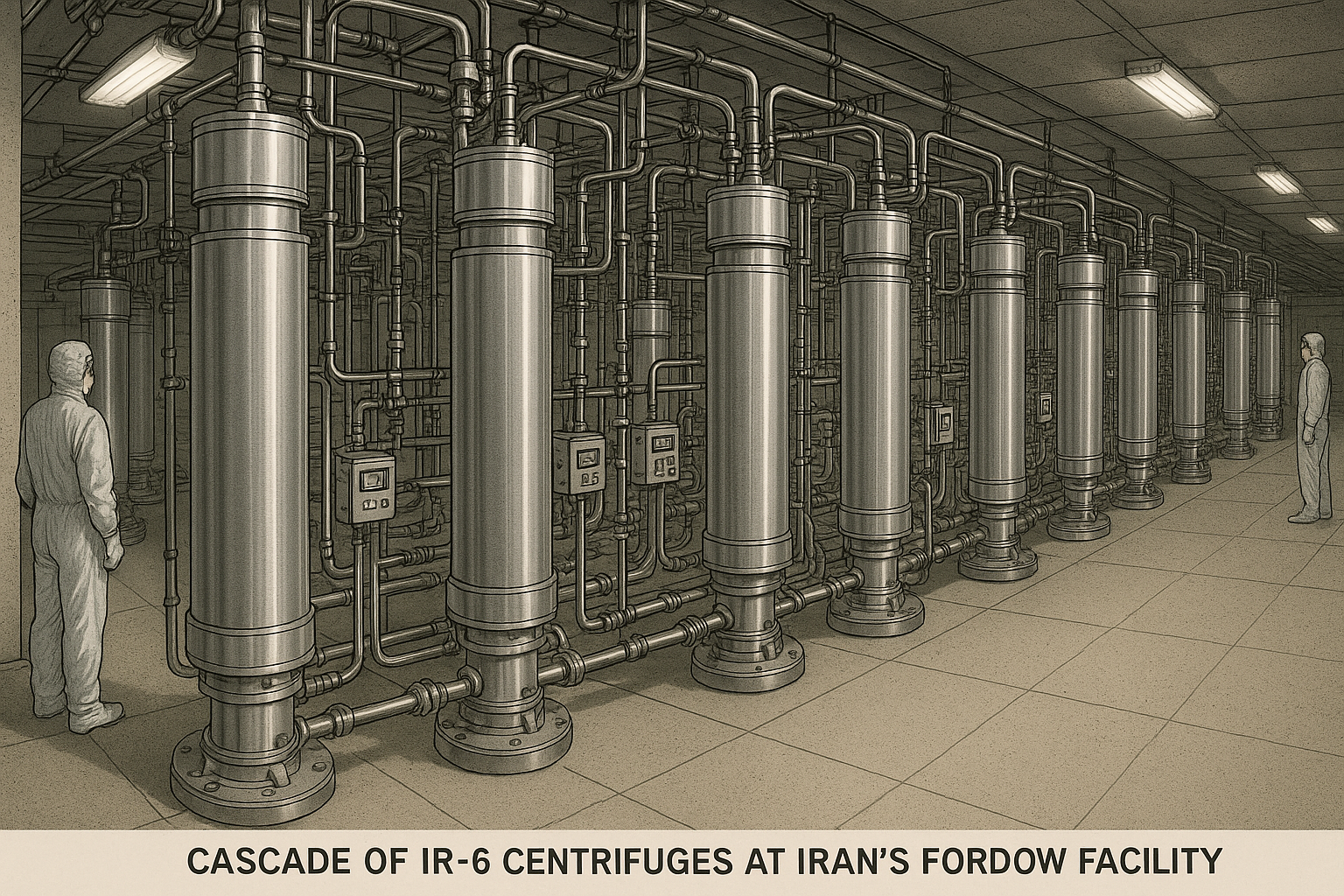
Illustration of IR-6 centrifuge cascade at Iran’s Fordow nuclear facility. Multiple advanced centrifuges are connected in series through a complex piping system to progressively enrich uranium.
How IR-6 Centrifuges Change the Game
The introduction of IR-6 centrifuges at Fordow fundamentally alters Iran’s nuclear capabilities in several ways216. First, these advanced machines significantly reduce the time required to produce highly enriched uranium1723.
With their greater efficiency, IR-6 centrifuges accelerate the enrichment process considerably168. For example, a cascade of IR-6 centrifuges can produce 20% enriched uranium in a matter of weeks, compared to months with IR-1 machines3123.

Diagram of IR-6 Centrifuge Operation
The implications for Iran’s “breakout time”—the time needed to produce enough fissile material for a nuclear weapon—are substantial3117. Before the deployment of advanced centrifuges like the IR-6, Iran’s estimated breakout time was approximately one year; with these machines in operation, some experts now estimate it could be as short as a few weeks2232.
Moreover, the technical knowledge gained through developing and operating advanced centrifuges like the IR-6 represents a permanent advancement in Iran’s nuclear capabilities2610. Unlike physical infrastructure, which can be dismantled, this expertise cannot be “un-learned” or easily reversed through diplomatic agreements2629.
Another critical concern is that advanced centrifuges enable smaller, more efficient enrichment facilities2926. An enrichment plant using IR-6 centrifuges would require significantly less space than one using IR-1 machines, potentially making clandestine facilities easier to hide from international inspectors and satellite surveillance2924.
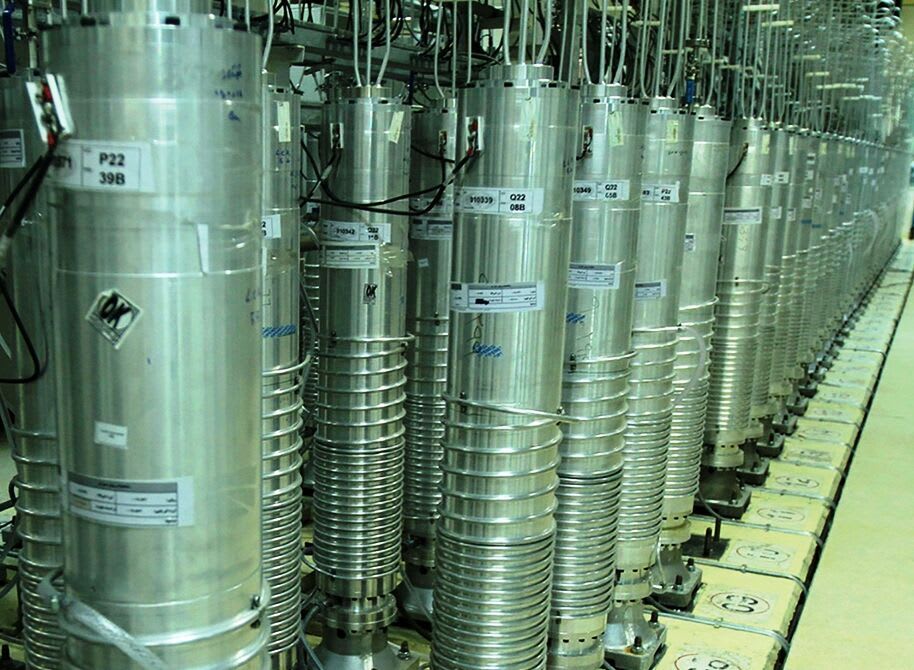
A row of advanced centrifuges, potentially IR-6 models, within a facility for uranium enrichment.
International Concerns and Reactions
The deployment of IR-6 centrifuges at Fordow has prompted serious concern from the international community1633. Western nations view the combination of an advanced enrichment capability in a heavily fortified facility as particularly worrying65.
In June 2025, the IAEA Board of Governors formally found Iran to be in non-compliance with its nuclear safeguards obligations for the first time in 20 years3318. The resolution cited Iran’s failure to provide full and timely cooperation regarding undeclared nuclear material and activities across multiple sites3334.
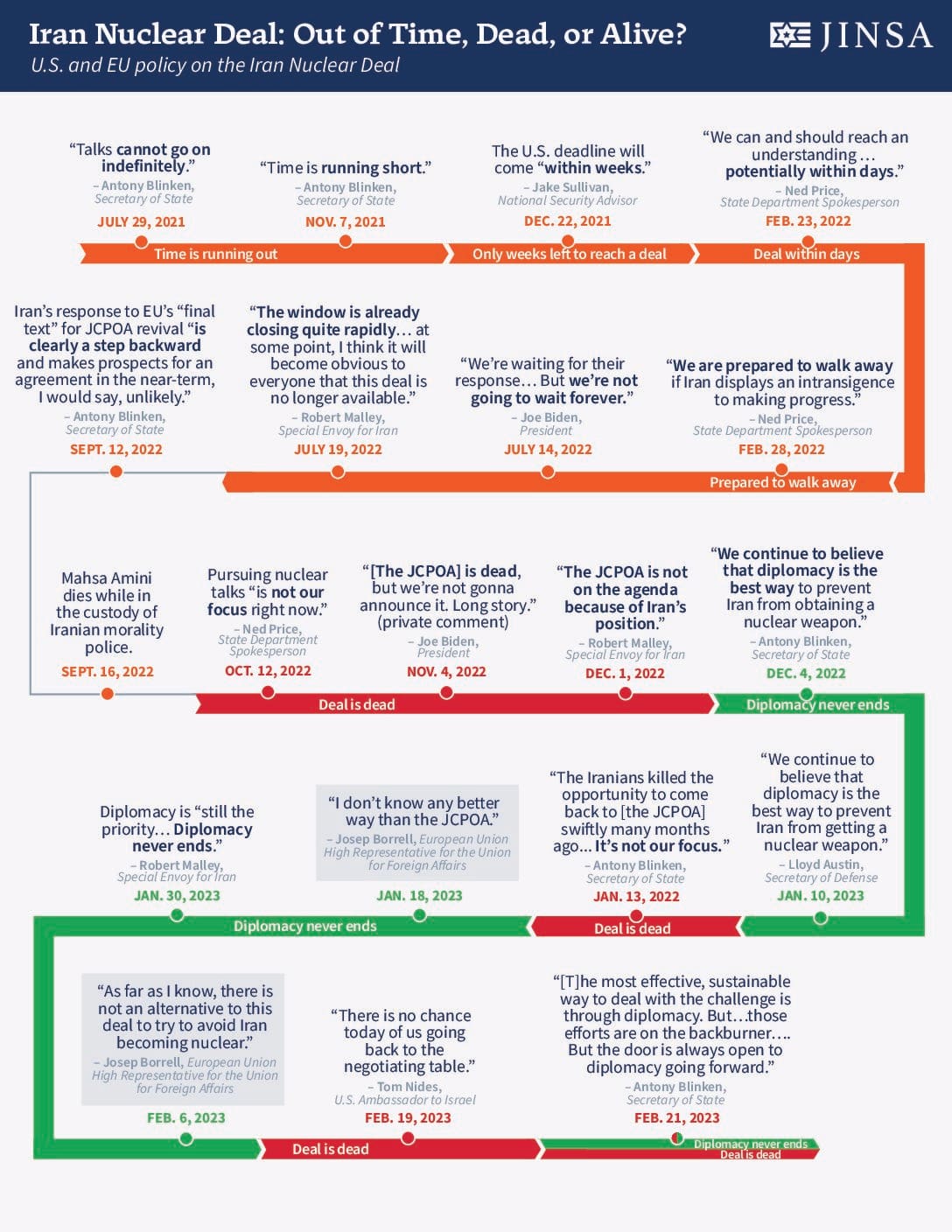
Infographic detailing the timeline of diplomatic statements and assessments by U.S. and EU officials regarding the Iran Nuclear Deal (JCPOA) from July 2021 to February 2023.
Iran responded defiantly to the IAEA resolution, announcing plans to establish a new enrichment facility “in a secure location” and to replace the first-generation centrifuges at Fordow with “advanced sixth-generation” centrifuges1833. This escalation has further heightened tensions in an already volatile region35.
The United States and its European allies have expressed concern that Iran’s advancement in centrifuge technology brings it dangerously close to a nuclear weapons capability3622. In June 2025, U.S. officials noted that Iran had stockpiled over 400 kg of uranium enriched to 60%, which could be quickly converted to weapons-grade material if Tehran made that decision3637.
Israel, which views Iran’s nuclear program as an existential threat, has taken more direct action2235. In June 2025, Israeli forces launched strikes against several Iranian nuclear facilities, though the heavily fortified Fordow site reportedly suffered minimal damage3427.
The current diplomatic impasse has raised questions about the future of Iran’s nuclear program and international efforts to constrain it34. While Iran maintains that its program is entirely peaceful, the continued advancement of its centrifuge technology and enrichment activities have eroded trust and complicated efforts to reach a diplomatic resolution3522.
Current Status and Future Trajectory
As of June 2025, Iran has significantly expanded its advanced centrifuge program, with particular focus on the IR-6 model1730. According to IAEA reports, Iran has installed thousands of advanced centrifuges across its facilities, with the IR-6 being deployed in significant numbers at both Natanz and Fordow1730.
At Fordow specifically, Iran has deployed interconnected cascades of IR-6 centrifuges to produce uranium enriched up to 60%308. The facility’s underground, fortified position makes it particularly significant in Iran’s nuclear infrastructure, especially following Israeli strikes on more exposed facilities like Natanz34.
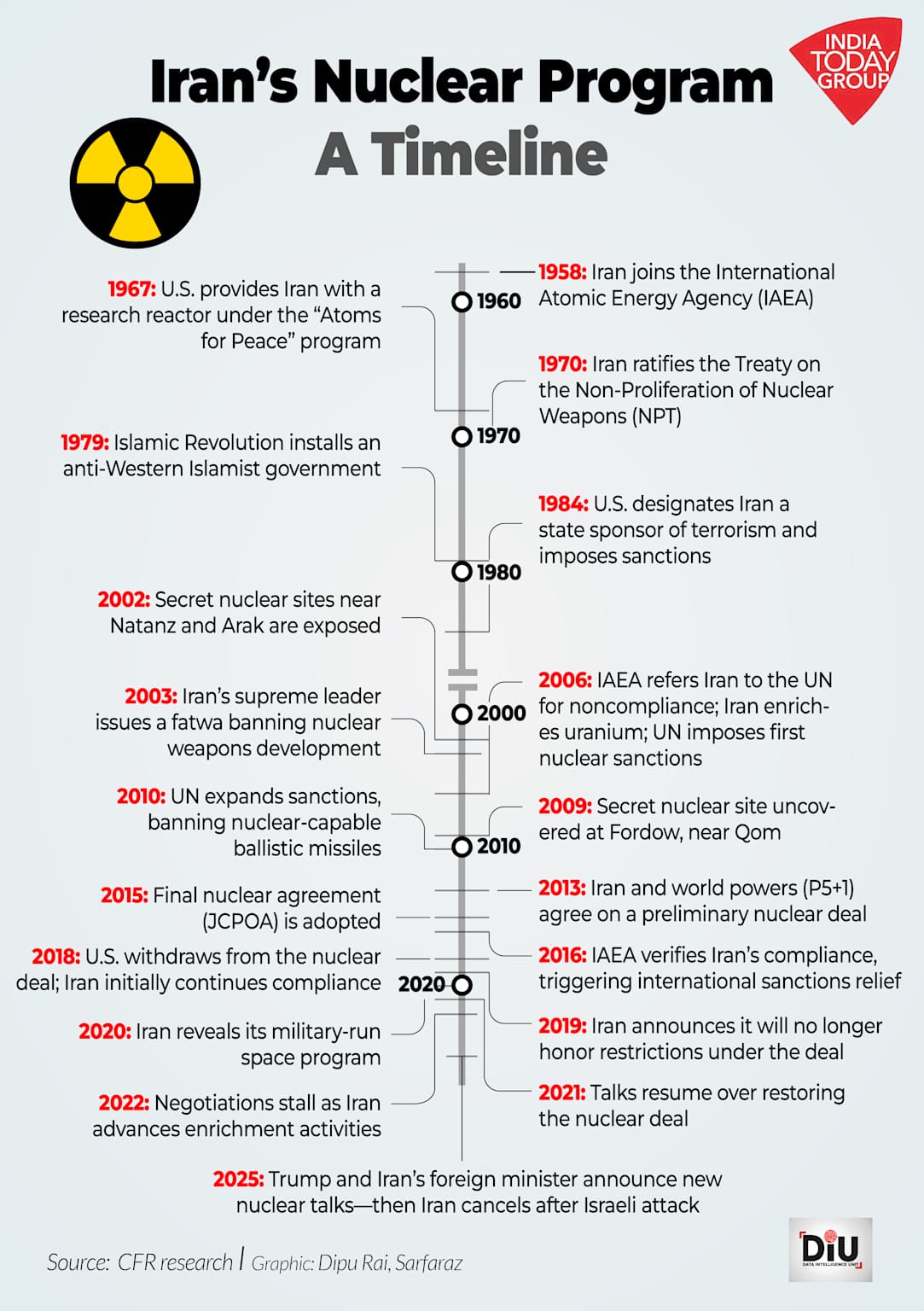
A timeline illustrating key events in Iran’s nuclear program from 1958 to 2025, including milestones related to enrichment activities and international agreements.
Recent IAEA findings have indicated that Iran possesses enough uranium enriched to 60% purity to potentially produce several nuclear weapons if further enriched to 90%368. According to some analyses, Iran could convert its current stockpile of 60% enriched uranium into weapons-grade material in as little as three weeks at the Fordow facility8.
Looking ahead, Iran appears committed to further expanding its centrifuge program1837. In June 2024, the Washington Post reported on plans for a major expansion at Fordow, with nearly 1,400 new IR-6 centrifuges earmarked for the subterranean facility58. If fully implemented, this expansion would significantly increase Iran’s enrichment capacity and further reduce its breakout time817.
The technical trajectory is clear: Iran continues to improve its centrifuge designs and manufacturing capabilities26. While the IR-6 has shown some operational inefficiencies, continued development could overcome these limitations and further enhance Iran’s enrichment capabilities21.
Why It Matters: The Global Implications
The advancement of Iran’s centrifuge technology, particularly the deployment of IR-6 machines at the fortified Fordow facility, has significant implications for regional and global security1422. These developments directly impact the international non-proliferation regime designed to prevent the spread of nuclear weapons3336.
The reduced “breakout time” afforded by IR-6 centrifuges limits the international community’s response options in case Iran decides to pursue nuclear weapons2322. With potentially just weeks needed to produce weapons-grade uranium, diplomatic and economic pressure may have insufficient time to take effect3132.

A detailed timeline illustrating key events in Iran’s nuclear program from the 1980s through 2025, including the exposure of the Fordow enrichment site.
The technological knowledge gained through developing advanced centrifuges represents a permanent advancement in Iran’s nuclear capabilities2629. Unlike physical infrastructure, this expertise cannot be easily eliminated through diplomatic agreements or military action2627.
Advanced centrifuges like the IR-6 also increase the risk of a “sneak-out” scenario, where Iran could establish small, clandestine enrichment facilities using these efficient machines2926. Such facilities would be more difficult to detect through satellite surveillance or intelligence operations than larger installations with thousands of IR-1 centrifuges2924.
The situation at Fordow has heightened tensions in an already volatile region, with Israel viewing Iran’s nuclear advancements as an existential threat5. The recent military exchanges between Israel and Iran, partially motivated by concerns over nuclear developments, demonstrate the potential for conflict escalation34.
Furthermore, Iran’s centrifuge advancements could potentially trigger a regional nuclear arms race, as neighboring countries may seek their own nuclear capabilities in response2210. This would further destabilize a region already characterized by multiple conflicts and tensions34.
Conclusion: The Technical Path Forward
The IR-6 centrifuge represents a significant technological leap in Iran’s uranium enrichment capabilities, despite some operational inefficiencies21. With its carbon fiber construction, larger diameter, and substantially higher enrichment capacity compared to the IR-1, the IR-6 has become a cornerstone of Iran’s advanced centrifuge program2624.
Its deployment at the fortified Fordow facility creates a particularly challenging scenario for those seeking to constrain Iran’s nuclear activities614. The combination of advanced enrichment technology in a hardened, underground facility significantly reduces potential options for diplomatic or military intervention6.

Aerial view of the Fordow Fuel Enrichment Plant, an underground nuclear facility located in the mountains of Iran.
The technical momentum of Iran’s centrifuge program appears difficult to reverse1726. Even if international agreements are reached to limit physical deployment, the knowledge and expertise gained in developing these machines cannot be undone2926.
As IR-6 centrifuges continue to be installed and operated at Fordow and other facilities, the international community faces a narrowing window for addressing concerns about Iran’s nuclear trajectory8. The technical reality of these machines—their efficiency, durability, and compact size—presents a fundamental challenge to non-proliferation efforts2924.
Understanding the IR-6 centrifuge—its capabilities, limitations, and strategic implications—is essential for comprehending the broader dynamics of Iran’s nuclear program and the international response to it127. As this technology continues to evolve, it will remain a critical factor in one of the world’s most consequential security challenges2233.
Footnotes
-
https://isis-online.org/isis-reports/detail/the-ir-6-centrifuge-needs-further-development/ ↩ ↩2 ↩3 ↩4 ↩5 ↩6 ↩7 ↩8 ↩9 ↩10
-
https://www.csis.org/analysis/three-things-will-determine-irans-nuclear-future-fordow-just-one-them ↩ ↩2 ↩3 ↩4 ↩5 ↩6 ↩7 ↩8 ↩9 ↩10
-
https://www.aljazeera.com/news/2025/6/19/what-is-irans-fordow-nuclear-facility-and-could-us-weapons-destroy-it ↩ ↩2 ↩3 ↩4 ↩5 ↩6 ↩7
-
https://en.wikipedia.org/wiki/Fordow_Fuel_Enrichment_Plant ↩ ↩2 ↩3 ↩4 ↩5 ↩6 ↩7 ↩8 ↩9
-
https://news.sky.com/story/fordow-what-we-know-about-irans-secretive-nuclear-mountain-and-how-israel-might-try-to-destroy-it-13385834 ↩ ↩2 ↩3 ↩4 ↩5 ↩6 ↩7
-
https://www.sipri.org/commentary/essay/2021/why-iran-producing-60-cent-enriched-uranium ↩ ↩2 ↩3 ↩4 ↩5 ↩6 ↩7
-
https://www.cnn.com/2025/06/17/middleeast/iran-fordow-nuclear-site-latam-hnk-intl ↩ ↩2 ↩3 ↩4 ↩5 ↩6 ↩7 ↩8 ↩9 ↩10
-
https://www.lawfaremedia.org/article/comprehensive-timeline-iran-deal ↩ ↩2 ↩3
-
https://en.wikipedia.org/wiki/Nuclear_program_of_Iran ↩ ↩2 ↩3 ↩4 ↩5 ↩6
-
https://www.armscontrol.org/factsheets/timeline-nuclear-diplomacy-iran-1967-2023 ↩ ↩2 ↩3
-
https://en.wikipedia.org/wiki/Timeline_of_the_nuclear_program_of_Iran ↩
-
https://www.cbsnews.com/news/israel-iran-war-fordo-nuclear-site/ ↩ ↩2 ↩3 ↩4
-
https://isis-online.org/uploads/isis-reports/documents/A_Comprehensive_Survey_of_Irans_Advanced_Centrifuges_December_2021.pdf ↩
-
https://www.brandeis.edu/crown/publications/middle-east-briefs/pdfs/101-200/meb149.pdf ↩ ↩2 ↩3 ↩4 ↩5 ↩6
-
https://isis-online.org/isis-reports/detail/iranian-breakout-timelines-under-jcpoa-type-limits/ ↩ ↩2 ↩3 ↩4 ↩5 ↩6 ↩7
-
https://www.ans.org/news/article-4122/irans-use-of-advanced-enrichment-centrifuges-raises-concerns/ ↩ ↩2 ↩3 ↩4
-
https://www.nrc.gov/materials/fuel-cycle-fac/ur-enrichment.html ↩ ↩2 ↩3 ↩4 ↩5 ↩6 ↩7
-
https://science.howstuffworks.com/uranium-centrifuge.htm ↩ ↩2 ↩3
-
https://www.cnn.com/2025/06/13/middleeast/iran-nuclear-program-explainer-intl-dg ↩ ↩2 ↩3 ↩4 ↩5 ↩6 ↩7 ↩8 ↩9
-
https://www.dw.com/en/fordo-the-heart-of-irans-nuclear-program/a-72955781 ↩ ↩2 ↩3 ↩4
-
https://www.iranwatch.org/our-publications/weapon-program-background-report/irans-centrifuges-models-status ↩ ↩2 ↩3 ↩4 ↩5 ↩6 ↩7 ↩8 ↩9 ↩10 ↩11 ↩12 ↩13
-
https://www.iranwatch.org/our-publications/articles-reports/irans-nuclear-timetable-weapon-potential ↩
-
https://www.iranwatch.org/our-publications/articles-reports/beyond-ir-1-irans-advanced-centrifuges-their-lasting-implications ↩ ↩2 ↩3 ↩4 ↩5 ↩6 ↩7 ↩8 ↩9 ↩10 ↩11 ↩12 ↩13 ↩14 ↩15 ↩16 ↩17 ↩18 ↩19 ↩20 ↩21 ↩22 ↩23
-
https://www.washingtoninstitute.org/policy-analysis/united-states-may-destroy-fordow-enrichment-plant-it-wont-make-iranian-nuclear ↩ ↩2 ↩3 ↩4 ↩5 ↩6
-
https://iranprimer.usip.org/blog/2021/nov/22/explainer-controversy-over-iran’s-centrifuges ↩ ↩2 ↩3
-
https://isis-online.org/isis-reports/detail/september-2022-highlights-of-survey-of-irans-advanced-centrifuges/8 ↩ ↩2 ↩3 ↩4 ↩5 ↩6 ↩7 ↩8 ↩9 ↩10 ↩11
-
https://www.iaea.org/newscenter/statements/statement-on-the-situation-in-iran-13-june-2025 ↩ ↩2 ↩3 ↩4 ↩5 ↩6
-
https://iranprimer.usip.org/blog/2021/oct/06/explainer-iran’s-nuclear-progress ↩ ↩2 ↩3
-
https://www.reuters.com/world/middle-east/israel-iran-air-war-enters-second-week-europe-pushes-diplomacy-2025-06-20/ ↩ ↩2
-
https://www.bbc.com/news/articles/ce3v6w2qr12o ↩ ↩2 ↩3 ↩4 ↩5 ↩6
-
https://www.aljazeera.com/news/2025/6/12/un-nuclear-watchdog-says-iran-non-compliant-of-nuclear-safeguards ↩ ↩2 ↩3 ↩4 ↩5 ↩6
-
https://abcnews.go.com/Politics/irans-nuclear-program-amid-assessments/story?id=122929192 ↩ ↩2 ↩3
-
https://isis-online.org/isis-reports/detail/analysis-of-iaea-iran-verification-and-monitoring-report-february-2024 ↩ ↩2 ↩3 ↩4
-
https://www.npr.org/2025/06/12/nx-s1-5431395/iran-nuclear-enrichment-un-compliance ↩ ↩2